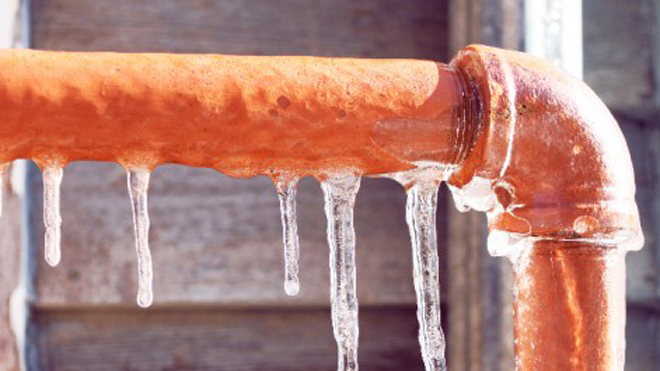Essential Tips for Preventing Frozen Pipes in Winter Seasons
Essential Tips for Preventing Frozen Pipes in Winter Seasons
Blog Article
How do you feel when it comes to How To Avoid Freezing Pipes?

Winter can ruin your pipes, specifically by freezing pipes. Below's how to avoid it from taking place and what to do if it does.
Intro
As temperatures drop, the risk of icy pipelines increases, possibly bring about pricey repair work and water damages. Recognizing how to prevent frozen pipes is important for house owners in cool environments.
Comprehending Icy Pipelines
What triggers pipes to freeze?
Pipelines ice up when subjected to temperatures listed below 32 ° F (0 ° C) for prolonged durations. As water inside the pipes ices up, it expands, taxing the pipe wall surfaces and possibly causing them to burst.
Dangers and damages
Icy pipes can bring about water interruptions, home damage, and pricey repair work. Ruptured pipes can flooding homes and cause substantial structural damages.
Signs of Frozen Pipes
Identifying frozen pipes early can prevent them from bursting.
How to identify icy pipelines
Seek lowered water circulation from faucets, uncommon odors or noises from pipelines, and visible frost on revealed pipes.
Avoidance Tips
Insulating vulnerable pipelines
Wrap pipelines in insulation sleeves or use warmth tape to safeguard them from freezing temperature levels. Focus on pipelines in unheated or outside areas of the home.
Home heating techniques
Maintain indoor areas effectively heated, particularly locations with pipes. Open up cupboard doors to allow warm air to circulate around pipes under sinks.
Shielding Exterior Plumbing
Yard pipes and exterior taps
Detach and drain garden hoses prior to winter season. Install frost-proof spigots or cover outdoor faucets with shielded caps.
What to Do If Your Pipes Freeze
Immediate actions to take
If you believe icy pipelines, keep taps available to relieve pressure as the ice thaws. Make use of a hairdryer or towels soaked in hot water to thaw pipelines gradually.
Long-Term Solutions
Architectural adjustments
Consider rerouting pipelines far from outside walls or unheated areas. Add additional insulation to attics, basements, and crawl spaces.
Upgrading insulation
Invest in top quality insulation for pipes, attic rooms, and wall surfaces. Correct insulation aids keep constant temperature levels and lowers the threat of icy pipelines.
Conclusion
Preventing icy pipelines requires proactive actions and quick reactions. By understanding the reasons, indications, and preventive measures, home owners can shield their plumbing throughout cold weather.
5 Ways to Prevent Frozen Pipes
Drain Outdoor Faucets and Disconnect Hoses
First, close the shut-off valve that controls the flow of water in the pipe to your outdoor faucet. Then, head outside to disconnect and drain your hose and open the outdoor faucet to allow the water to completely drain out of the line. Turn off the faucet when done. Finally, head back to the shut-off valve and drain the remaining water inside the pipe into a bucket or container. Additionally, if you have a home irrigation system, you should consider hiring an expert to clear the system of water each year.
Insulate Pipes
One of the best and most cost-effective methods for preventing frozen water pipes is to wrap your pipes with insulation. This is especially important for areas in your home that aren’t exposed to heat, such as an attic. We suggest using foam sleeves, which can typically be found at your local hardware store.
Keep Heat Running at 65
Your pipes are located inside your walls, and the temperature there is much colder than the rest of the house. To prevent your pipes from freezing, The Insurance Information Institute suggests that you keep your home heated to at least 65 degrees, even when traveling. You may want to invest in smart devices that can keep an eye on the temperature in your home while you’re away.
Leave Water Dripping
Moving water — even a small trickle — can prevent ice from forming inside your pipes. When freezing temps are imminent, start a drip of water from all faucets that serve exposed pipes. Leaving a few faucets running will also help relieve pressure inside the pipes and help prevent a rupture if the water inside freezes.
Open Cupboard Doors
Warm your kitchen and bathroom pipes by opening cupboards and vanities. You should also leave your interior doors ajar to help warm air circulate evenly throughout your home.

Do you appreciate reading up on Preventing and dealing with frozen pipes? Try leaving feedback down below. We would be delighted to see your reactions about this post. We are looking forward that you visit us again soon. Appreciated our blog entry? Please quickly share it. Help other people discover it. Thanks so much for taking the time to read it.
Request Service Report this page